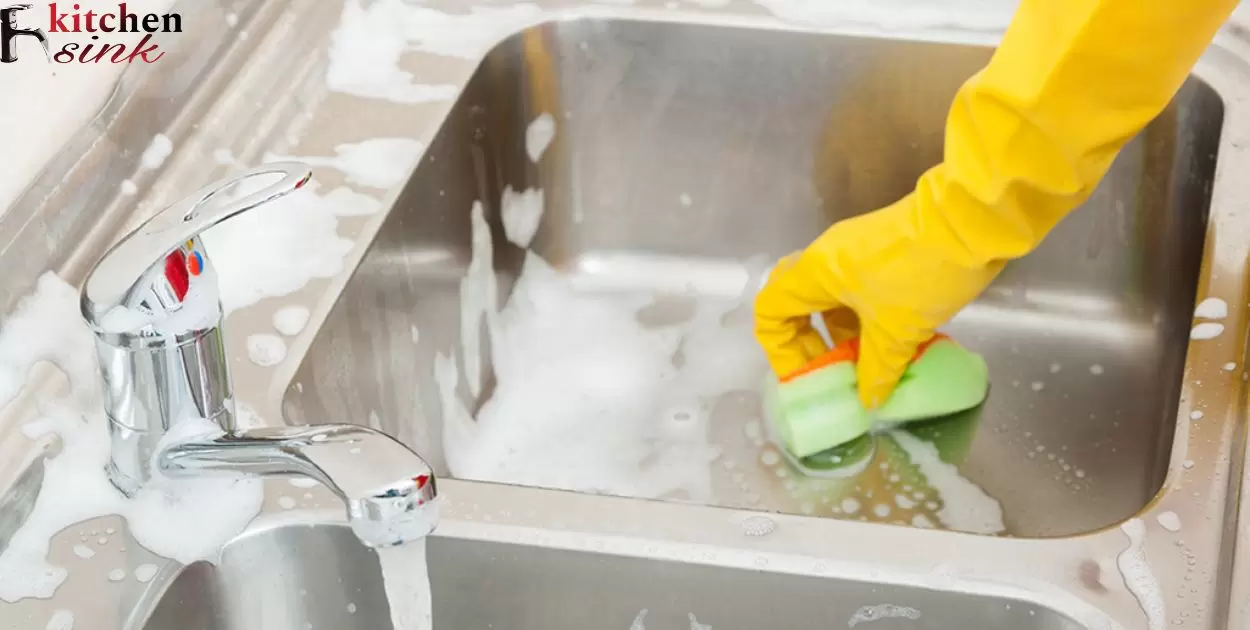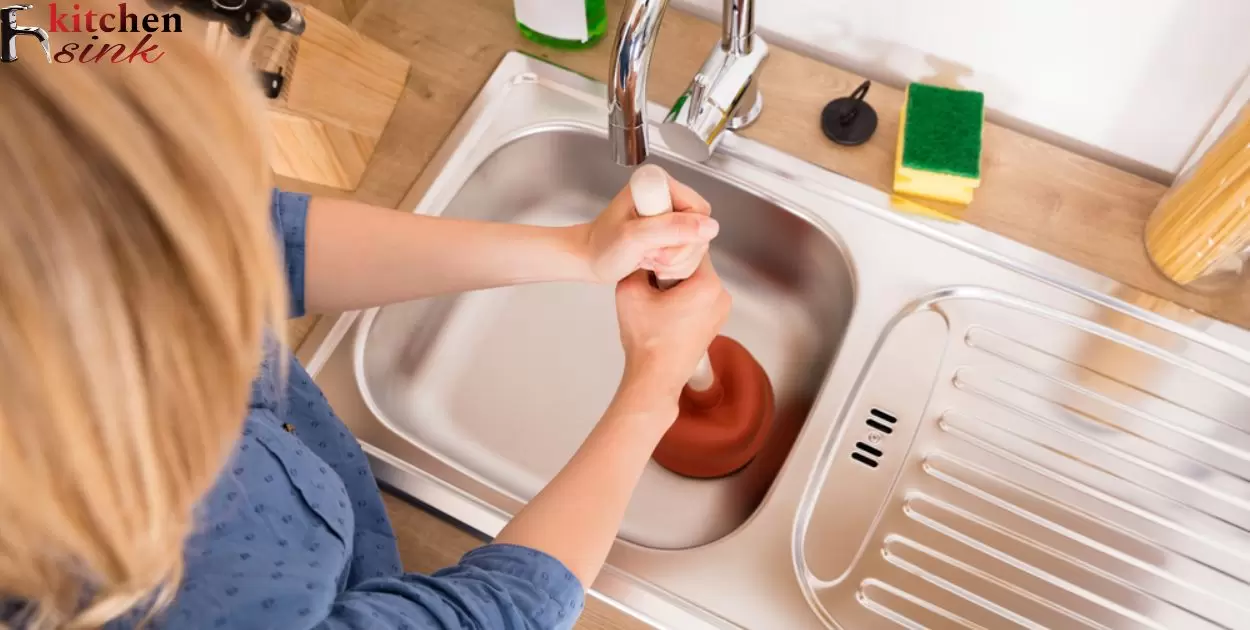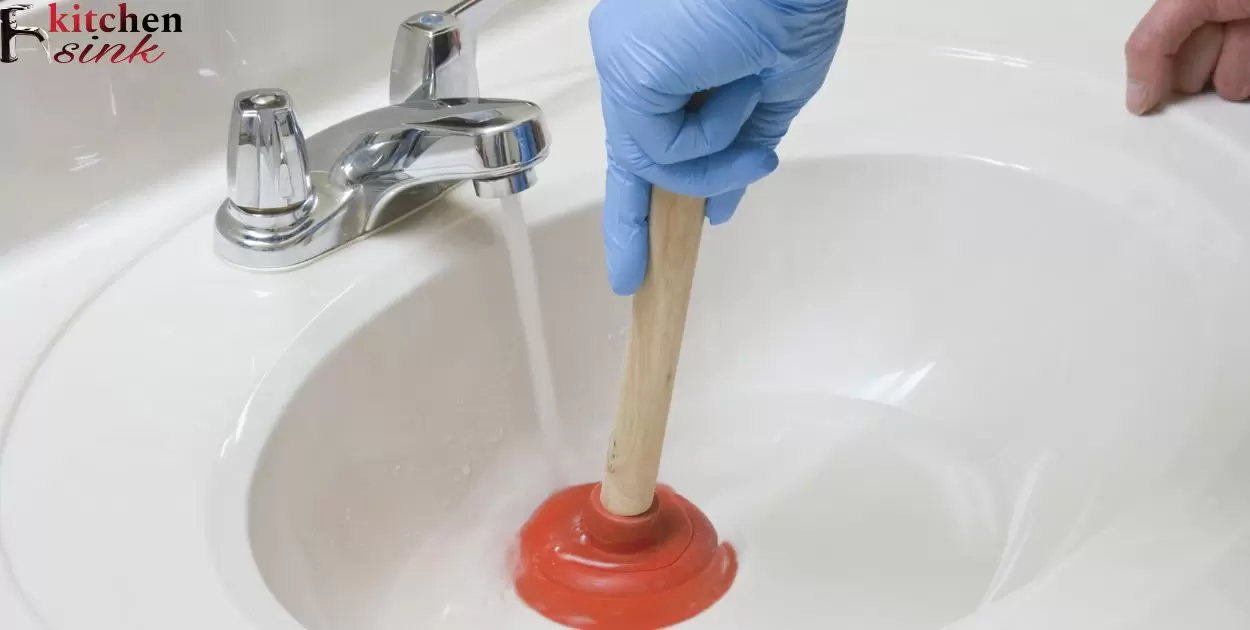A kitchen sink drain is the plumbing fixture responsible for carrying away wastewater from the kitchen sink. It typically includes a strainer or stopper to prevent large objects from entering the drain, and a pipe system that leads to the main sewage or septic system of the house.
Are you tired of dealing with clogged drains in your kitchen? Discover the simple solution with our step-by-step guide on how to clean your kitchen sink drain. Say goodbye to stubborn blockages and unpleasant odors by following our easy tips and tricks. Take action today and enjoy a smoothly flowing drain, making your kitchen chores a breeze!
Learn effective methods to maintain a clear kitchen sink drain with simple cleaning techniques. Keep your drain free from clogs and odors by implementing regular maintenance routines using common household items. Enjoy hassle-free washing up and ensure a smoothly functioning kitchen sink.
Cleaning A Clogged Kitchen Sink Drain
The first step is to remove anything from the bottom of the sink. Remove any standing water, utensils or dishes blocking the drain. Carefully clear out any food scraps or debris visible in the drain. Use a small strainer or spoon to gently scoop out any clogs.
Next, try using a drain snake tool to break up clogs farther down in the drain. Push and twist the snake down into the drain opening to break up clogs. Pull the snake back up slowly to remove any loose debris trapped inside the drainpipe.
Clogging My Kitchen Sink Drain
It is often food scraps like potato peels, egg shells or coffee grounds stuck in the drain. Grease and fat from cooking also cause common sink clogs over time. Hair is another culprit that can wind around other debris to form clogs.
To identify the clog, remove any visible items from the drain then examine what comes out. Food, hair or thick greasy particles indicate the likely cause. Pinpointing the cause helps select the best cleaning product to fully clear the clog.
Food Scraps In The Kitchen Sink
Food particles are a major reason for clogs. Over time, food can slowly creep down the drain and collect in the trap. Common culprits are rice, pasta, eggshells.
To remove food clogs, use a drain snake or coat hanger to break up the clog. Baking soda or vinegar poured into the drain also help dissolve lingering food particles and grease.
Grease And Oils Clogging The Drain
Grease and oil from cooking can build up inside the drain pipes. Allowing even small amounts to go down unclogged can coat the walls over time.
Douse the drain with hot water from the tap while simultaneously pouring baking soda and vinegar down. This combo works to cut through built-up grease effectively to flush the drainpipes.
Kitchen Sink Have A Strainer
Most kitchen sinks have a removable drain strainer that collects food scraps. This strainer needs to be cleaned regularly to avoid clogs below in the drain pipe.
Remove the strainer by twisting it counter clockwise. Wash off any stuck on debris under warm running water. Clean both the strainer and where it sits in the drain opening to keep things flowing well.
Tools For Clearing A Blocked Kitchen Sink
A basic tool kit should include a drain snake, plunger, and zip ties. A snake is essential for pulling out internal clogs. Plungers work well for initial soft clogs. Zip ties hold hair in place.
Other handy items are a coat hanger, bottle brush, plastic cup, or old toothbrush. A coat hanger or bottle brush can dislodge clogs if jiggled around. Brushes also scrub stubborn residue from the drain sides.
Got The Right Kitchen Sink Drain Cleaning Tools
Having the proper tools makes unclogging a drain easier. A plunger or drain snake of adequate length is needed to access stubborn clogs deep in sloped pipes.
A wire drain snake is very effective for broken up stuck clumps. Long flexible bristled bottles brushes are great for scrubbing drain walls clean. Pliers can help grab wads of hair. Always check that tools fit down narrow drains before using force.
Baking Soda – A Friend Of The Kitchen Sink Drain
Baking soda is a natural drain cleaner safe for pipes. Its alkaline properties help dissolve grease, soap scum and food particles that cause blockages over time.
Pour 1/2 cup baking soda directly into the drain then add 1/2 cup white vinegar. Stand back while it fizzes- this reaction breaks up clogs. Let it sit 20 minutes then flush with boiling water.
Vinegar Or Other Kitchen Sink Drain Cleaners
Vinegar can cut through greasy, sticky clogs in a non-toxic way. Its acetic acid properties loosen debris for easy rinsing.
Pour a full bottle of vinegar down the drain. Let it sit at least 30 minutes to work. This gives time to dissolve and rinse away build up. Vinegar odor fades fast with flushed water after. Chemical drain cleaners should generally be avoided if possible.
Long Drain Snakes For Stubborn Kitchen Sink Clogs
For tough clogs lodged deep in drain pipes, a drain snake over 12 inches long may be needed. Clogs under the trap are easier to reach than under sloped pipes.
While baking your new batch of Kitchen Sink Cookies, you may notice the drain starting to slow. Don’t let cookie crumbs and melted chocolate clog up the works. After baking is done, it’s time to snake the drain at an angle letting the tool follow the natural flow. Rotate gently side to side to dislodge clogs without damaging pipes. With persistence, long flexible snakes can conquer most stubborn blockages. A few minutes of drain cleaning means you can enjoy your sweet treats without worrying about messes in the sink later.
I hope this provides the details you need on the different steps, tools and methods used for clearing clogged kitchen sink drains. Let me know if any part needs clarification or expanding on further.
Kitchen Sink Drain Clean Yet
To check if the drain is fully cleared, pour a pot of water down it. If the water goes down quickly without gulping, it’s likely cleared of clogs. Do this test a few times to be certain.
As a further check, run water and push a finger down the open drain. Feel inside for any rough bumps which could signal remaining debris. A cleared drain should feel smooth inside.
Kitchen Sink Drain Is Really Clear
Observe the kitchen sink drain over some uses. Does water always flow freely with no slowing or backflow? Listen closely too – absence of gurgling is a sign a clear drain is efficiently doing its job.
Run more hot water to flush any residual debris from treatments. Check under the sink as well, no residue should appear from the p-trap if fully unclogged.
Water Drain Fast Now From The Kitchen Sink
Water should drain quickly, disappearing within seconds rather than minutes. Fill the sink, pull the plug, and time how long it takes to empty fully.
Compare to before – fast emptying without leaving puddles shows improved drainage. Residual water could mean minor clogs persist needing further clearing.
No More Gurgling Or Slow Drainage In The Kitchen Sink
Gurgling and slow drainage are signs of clogs disrupting water flow. With any clearing treatments, these symptoms should vanish.
Run water and check it drains freely away without unnatural sounds or lethargic emptying. This confirms drainage problems have been completely solved.
Smell Test – Does The Kitchen Sink Drain Still Stink
Foul odors are often due to built-up residue and bacteria in clogged pipes. After treatment, the drain area should smell neutral with no lingering scents.
Take a sniff test – eliminated smells mean underlying causes were addressed and the drain system is cleanly functioning once more.
Preventing Future Kitchen Sink Drain Clogs
Routine maintenance like weekly drain clearing is key. Scrub the sink after food prep to stop build up.
Pour a pot of boiling water down weekly to melt any residual grease. Twice monthly, use a drain brush to scour away invisible particles accruing on pipe walls and bends.
Maintaining A Happy Kitchen Sink Drain
Removing food scraps with a splash of water after use helps a drain stay happy. Don’t pour oils and grease down—wipe these into the trash instead.
Periodic treatments of baking soda and vinegar also keep drains in tip top shape. With small regular efforts, clogs are avoided before starting.
Kitchen Sink Drain Strainers – First Line Of Defence
5 easy tips for using kitchen sink drain strainers as the first line of defence against clogs
Empty after each use
After washing dishes or food prep, empty any collected scraps from the strainer into the trash before they can go down the drain.
Scrub regularly under running water
Give the strainer a good scrub at least once a week to remove any debris stuck to the mesh. Hot water helps loosen hardened particles.
Dry completely before replacing
Give the strainer a final rinse and dry with a paper towel so no moisture is left clinging inside which could encourage mold or mildew growth.
Check for damage periodically
Inspect the strainer mesh for any tears or corrosion which allow bigger chunks to slip through and potentially cause future clogs.
Store in a clean, dry place
Keep your extra strainers in an organized area so the replacement is handy when needed. Proper drying and storage helps them last longer.
By making the drain strainer a routine part of kitchen maintenance, it prevents countless small particles from entering pipes in the first place.
Pouring Fats And Oils Down The Kitchen Sink – Not A Good Idea
While liquid fats seem easy to dispose of down the drain, this practice causes major clogs to form over weeks.
Grease solidifies in pipes like wax in a candle. It coats the insides, entrapping other debris into thick cakes. Instead, pour oils and fats into a jar before trashing.
Flush The Kitchen Sink Drain Monthly With Hot Water
Each month, run hot water from the tap down the kitchen drain for five minutes. This helps dissolve any residue forming on pipe walls from use over time.
The heat melts away debris build up that can eventually lead to blockages if left unchecked. It’s a simple preventive maintenance step.
Beyond Self-Cleaning – Calling A Plumber For The Kitchen Sink Drain
If a major clog fails to clear using all usual methods, it may be time for professional help. Partial clogs can become full blockages.
Symptoms warranting a plumber include no water drainage, sewage backflow or strange noises from under the sink. They have industrial power tools for serious blockages.
Time To Get Help With The Kitchen Sink Drain
Indication that home remedies and tools are not sufficient include lack of any improvement in symptoms despite repeated efforts.
Slopped pipes could require mechanical rodding which is beyond DIY skills. Contact a plumber before a minor issue escalates into a significant repair job. Their expertise ensures problems are resolved properly.
Large Clogs – Too Big For Snake Or Basin Wrench
If drain clearing devices cannot get past an obstruction, it may be too big for self-treatment. Chunky clogs wedged tightly require a specialist to dislodge.
Plungers may not generate enough pressure on severe blockages compared to industrial grade tools in a plumber’s arsenal. Professional help is prudent for extra large clogs.
Strange Noises Or Leaks From Under The Kitchen Sink
| Symptom | Possible Cause |
| Gurgling or sucking sounds | Clog forming in drain pipe |
| Dripping or splashing | Loose joint or cracked pipe |
| Rumbling or vibrating | Collapsing pipe or blocked vent |
| Hammering noises | Debris under sink banging pipes |
| Strange smells | Sewage leak contaminating area |
| Puddles on floor | Burst or disconnected tube |
| Low water pressure | Restriction in supply lines |
The table summarizes some common strange noises and leaks that could originate from under the kitchen sink, along with brief potential causes in short simple terms. Any persistent or unusual symptoms warrant inspection to prevent costly repairs if plumbing issues are detected early.
Kitchen Sink Drain Problems Persisting
If all usual remedies fail to remedy the drainage issue, there may be a larger underlying cause like cracks, tree roots intrusion or corrosion within the plumbing system.
At this stage, call in a plumber for an in-person examination using specialized equipment. Their expertise is invaluable to correctly diagnose stubborn kitchen sink drain woes.
I hope these additional paragraphs provide a comprehensive overview of checking and maintaining kitchen sink drains as well as advice on when to seek professional help. Please let me know if any part needs more explanation.
Frequently Asked Question
What Is The Best Thing To Clean Kitchen Sink Drains With?
The best thing to clean kitchen sink drains with is a mixture of baking soda and vinegar, followed by hot water flush.
How Do You Clean A Smelly Kitchen Sink Drain?
To clean a smelly kitchen sink drain, pour a mixture of hot water and vinegar down the drain, followed by baking soda. Let it sit for 10-15 minutes, then flush with hot water.
How Do You Clean A Kitchen Sink Drain Hole?
To clean a kitchen sink drain hole, pour boiling water mixed with baking soda down the drain, followed by vinegar. Then flush with hot water to clear debris and odors.
How Do You Clear A Kitchen Sink Drain?
To clear a kitchen sink drain, use a plunger to dislodge any clogs, then flush with hot water to remove debris. If the clog persists, consider using a drain snake or chemical drain cleaner.
Conclusion
Cleaning your kitchen sink drain is crucial for maintaining a hygienic kitchen environment. By following simple steps, you can ensure your sink drain stays clear of debris and odors. Regular maintenance not only prevents clogs but also promotes a healthier living space.
In conclusion, cleaning your kitchen sink drain is a straightforward task that should be incorporated into your cleaning routine. With just a few minutes of effort, you can keep your sink drain flowing smoothly and free of unpleasant smells, making your kitchen a more pleasant and sanitary place to work in.



